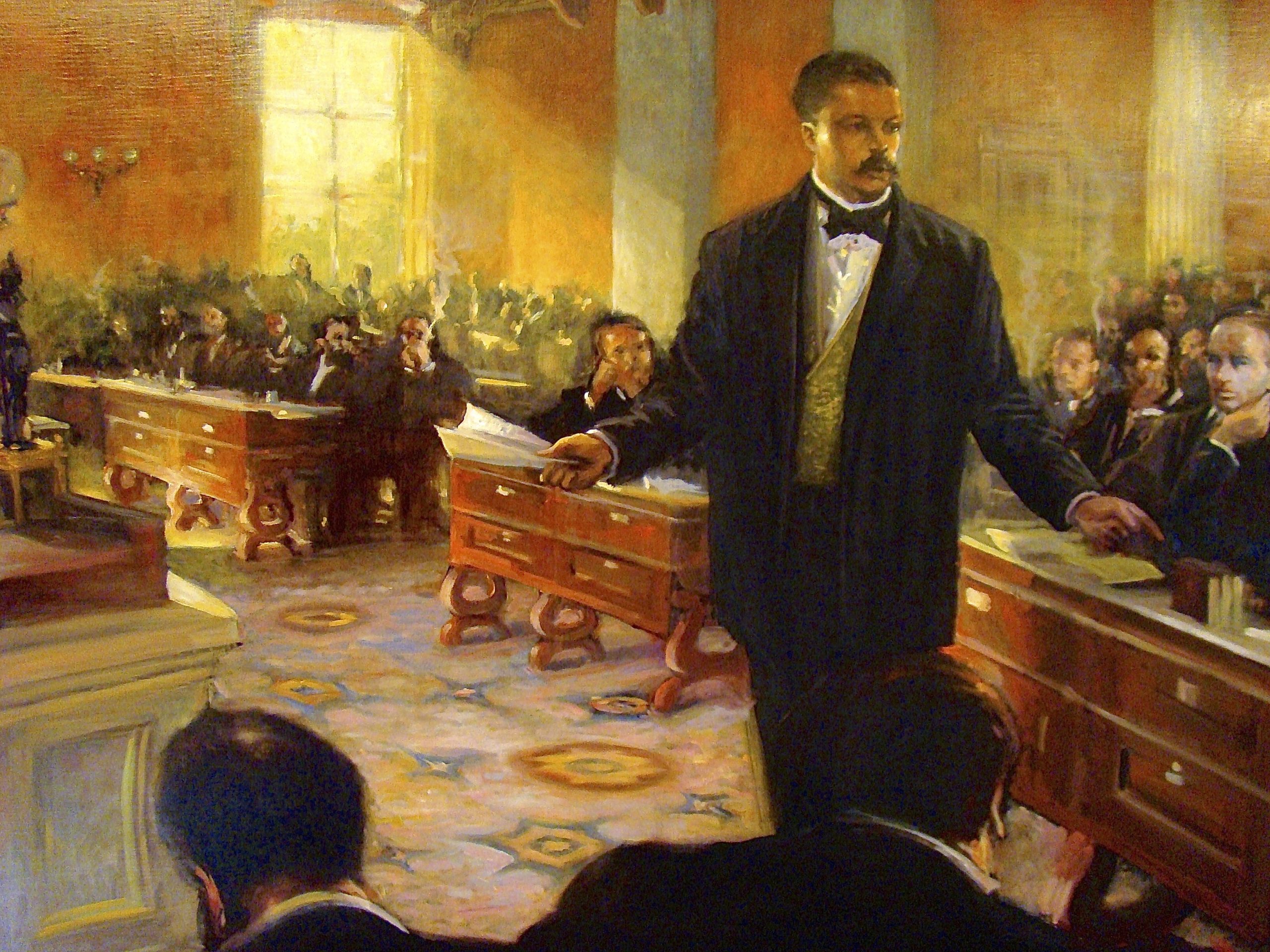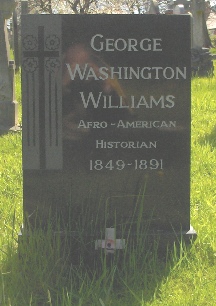George Washington Williams was a 19th-century Baptist minister, Civil War veteran, attorney, and politician who was the first African American elected to the Ohio State Legislature. He is most remembered today, however, as a historian who wrote History of the Negro Race in America from 1619 to 1880; as Negroes, as Slaves, as Soldiers, and as Citizens (1882), and A History of the Negro Troops in the War of the Rebellion (1887), and as an anti-colonial activist who after a visit to the Congo Free State in 1890, began to publicize the atrocities committed there by agents of Belgian King Leopold II.
George Washington Williams was born on October 16, 1849, in Bedford Springs, Pennsylvania, to Thomas and Ellen Rouse Williams. The oldest of four children, he lived there until 1864, when, at the age of 14, he left home to join the Union Army during the Civil War. After the War ended, he fought in Mexico in the campaign to overthrow French-imposed Emperor Maximilian. He then reenlisted in the Army and was assigned to the 10th Cavalry, a Buffalo Soldier unit then serving in Indian Territory.
Williams’ military career ended when he was wounded in 1868. After returning to civilian life he enrolled first at Howard University and then in 1870 in the Newton Theological Institution in Massachusetts and in 1874 became its first Black graduate. By the time he was 25 years old Williams had married Sarah A. Sterrett of Chicago and become pastor of the Twelfth Baptist Church in Boston. In 1875, he founded a newspaper called the Commoner, but by 1878, he and his wife and son moved to Cincinnati. There, he wrote for the Cincinnati Commercial, became a lawyer (studying under Alphonso Taft, father of future president William Howard Taft), and in 1880 became the first Black member of the Ohio State Legislature.

Painting of George Washington Williams Addressing the Ohio State House of Representatives. Photo by Bob Hall (CC BY-SA 2.0)
Williams spent only one term in political office, partly because he saw little chance of reelection and partly because he increasingly desired to write history. His first text, The History of the Negro Race in America (1882), received largely favorable reviews. Public reaction was amazement at the extent of this two-volume work on African Americans, who were thought to have little history, and because its author was African American. His second book, A History of the Negro Troops in the War of the Rebellion (1887), received similar but generally better reviews.
In 1884, President Chester A. Arthur, a Republican, appointed Williams U.S. Minister (Ambassador) to Haiti. Despite his confirmation by the United States Senate and a commission from the U.S. State Department, he was not allowed to assume his post because of opposition from the incoming Democratic President Grover Cleveland, who instead nominated John Edward Thompson.
In 1890, Williams studied conditions in the Congo Free State, later the Belgian Congo, at the request of President Benjamin Harrison. After being granted an interview with Belgian King Leopold II, who favorably described conditions there, Williams traveled to the Congo and discovered the appalling treatment of the indigenous Africans who were forced to produce rubber for Leopold’s enterprises. On July 18, 1890, Williams wrote an open letter from the Congo Free State to Leopold, condemning the treatment of the local people, and called for the creation of an international commission to investigate conditions there. Although he had hoped to spark a protest of Leopold’s actions, initially, little came of his effort.

George Washington Williams Headstone Layton Cemetery Blackpool England. Photo by Leightonmowbray at English Wikipedia (CC BY-SA 3.0)
Williams moved to England in 1891 to work on a book that would focus on colonialism in Africa. Unfortunately, he fell ill shortly after arriving in Blackpool, England, and died there on August 2, 1891, at the age of 41. His effort to bring attention to the plight of the people of the Congo, however, eventually caught the attention of the world and forced Leopold in 1908 to relinquish his control over the Congo Free State to the Belgian government.

